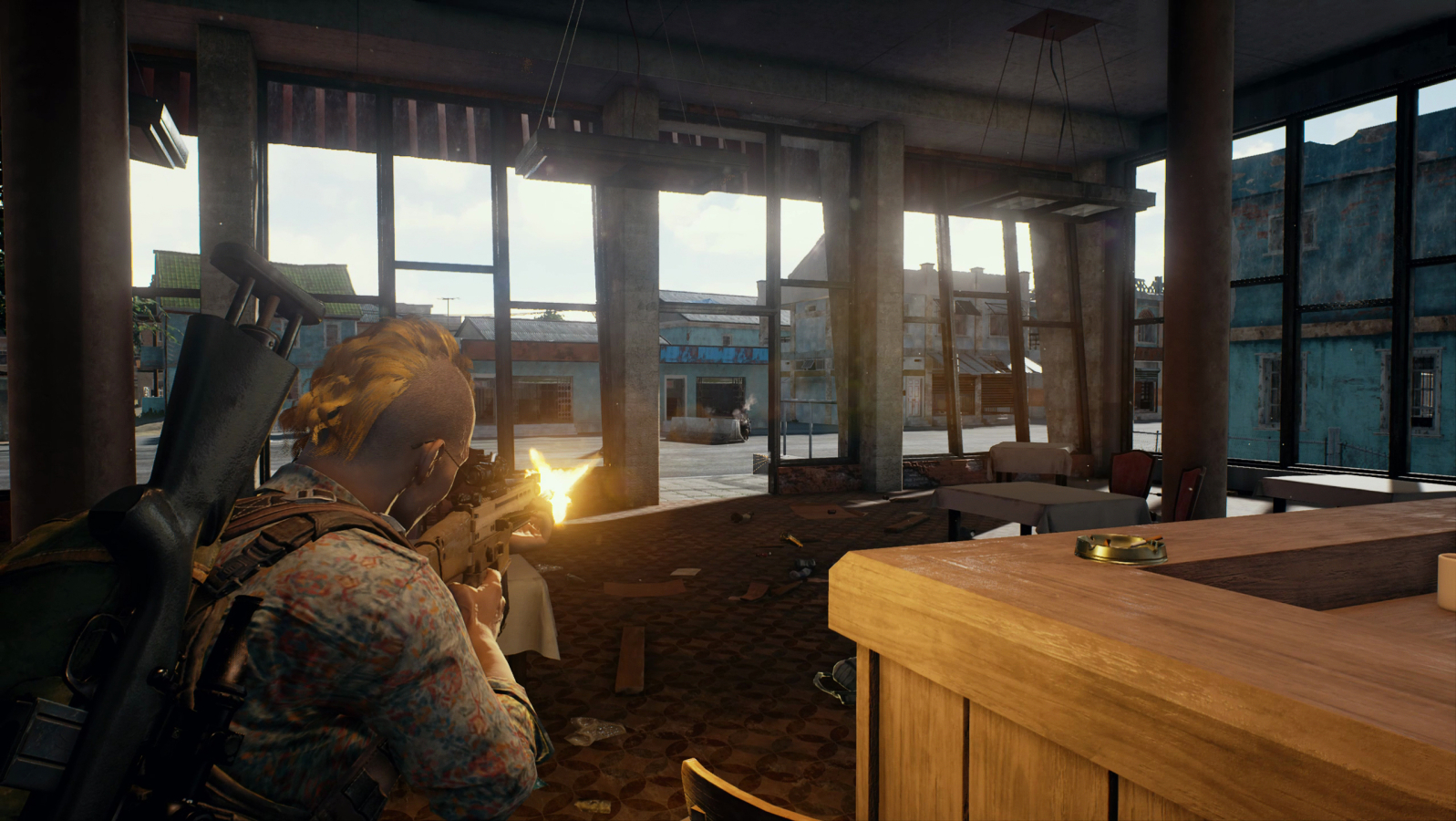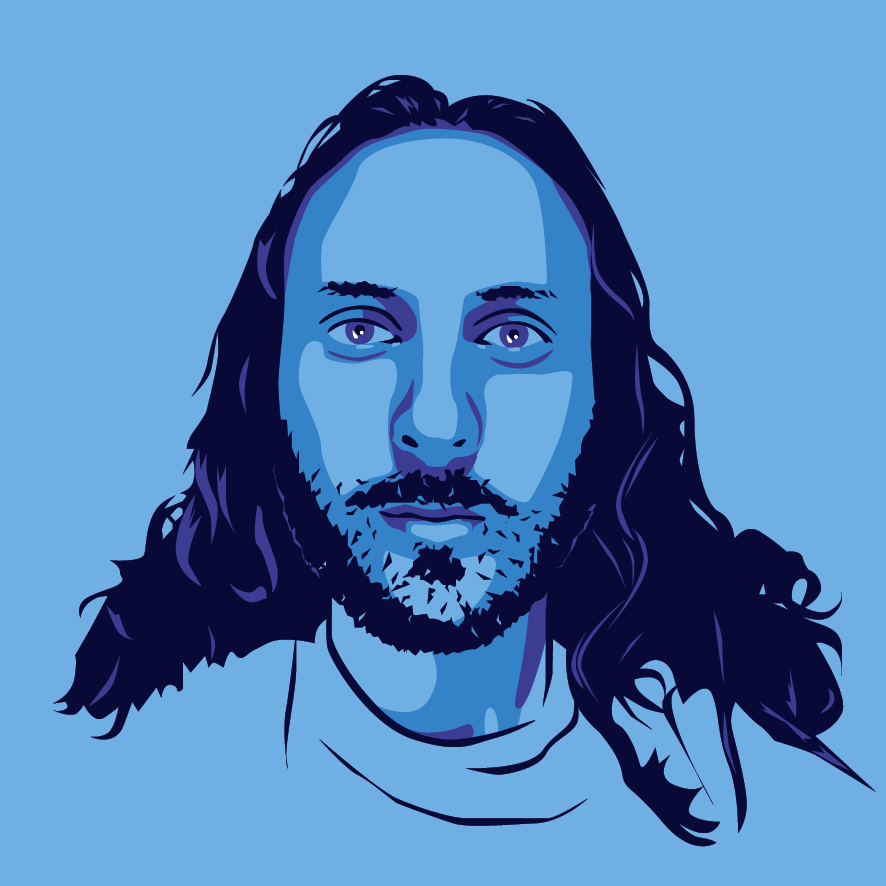PUBG clarify misunderstandings about their use of store-bought assets
"How many times do we gotta sculpt a cash register?"

During an interview with Geoff Keighley at E3, Brendan Greene, aka PlayerUnknown, talked about accusations his game is an 'asset flip' because it uses store-bought props. "That kills me a little inside," he said, "because I know we're not. We work with artists like Karol [Miklas] in Russia who does most of our vehicles, most of our buildings are hand-made by artists, and even foliage and stuff like that. Of course we use some props from marketplaces. We had to make a map within nine months and you don't do that without using the work of other artists but, for the most part, most of our stuff is made by hand. So I see these comments and I'm like, 'I want to kill you!'"
A video of that quote was posted to the PUBG subreddit under the heading 'Brendan Greene wants to kill me', and the response was predictable, with many taking it as an excuse to repeat criticisms about "lazy devs" and "bought assets". Eventually PUBG Corp.'s communications lead Ryan Rigney stepped in to explain things, talking through the creation of each of PUBG's maps. "Although a map like Miramar is a combination of in-house and external assets," he wrote, "the majority of the external assets are adjusted by our artists after the fact for visuals and for optimization/performance."
Rigney also quoted one of their art leads on the value of buying assets so they can concentrate their efforts elsewhere: "Why should one of my artists spend two weeks on a generic sculpt if they could instead spend that two weeks adding real value for players elsewhere? How many times should a telephone booth be modeled? How many times do we gotta sculpt a cash register?"
It's unlikely to have any effect on the conversation around 'asset flips', which is at this point just a stick angry fans use to beat games with rather than a meaningful criticism, but you can read Rigney's entire post below.
I keep seeing misinformation about this (including in the comments section here already), so I sat down with our lead artists to get their perspective. They shared a bunch of fascinating information, so I'm passing it on here for anyone who’s genuinely interested.
The first thing to understand is that if you’re just starting up a team, you’ve got to lean on asset store work because that's the only way you can spin up a game fast, and for a reasonable price, to quickly find the fun. Hiring an art team of 40 people to "try a game" and "see if it's fun" is simply not a smart way to work—this is what the asset store is for! It’s a great resource for teams that want to work smart.
From the beginning, our first map (Erangel) was a combination of in-house work at our HQ in Korea, some direct purchasing of assets, and outsourced art work from a team based in the American midwest. Basically, a few Americans built the Military Base on Erangel. That went so well that Korea decided to build a proper PUBG Corp. studio in Madison, Wisconsin for an in-house art team.
The biggest gaming news, reviews and hardware deals
Keep up to date with the most important stories and the best deals, as picked by the PC Gamer team.
Our reasoning for starting up that new studio is the same reason we started up PUBG Corp. as a separate company: we want to build up our teams slowly but steadily, to ensure quality hires and good culture fits, because we want to build a global organization to support PUBG for the longterm.
Anyway, I'm getting riled up here lol. Back to the story. The Madison folks were doing great work, so they began to take on more and more worldbuilding work. Miramar came about as result of collaboration between the new, PUBG Madison team and the Korean team at HQ in Seoul.
As our in-house art teams built Miramar, they began to rely less on store-bought assets, although they continued to use them strategically, because it just doesn’t make sense to build everything in the game world yourself. We also re-used some things from Erangel in Miramar. One of our lead artists (a guy called Dave) puts it this way:
“Why should one of my artists spend two weeks on a generic sculpt if they could instead spend that two weeks adding real value for players elsewhere? How many times should a telephone booth be modeled? How many times do we gotta sculpt a cash register?”
Although a map like Miramar is a combination of in-house and external assets, the majority of the external assets are adjusted by our artists after the fact for visuals and for optimization/performance.
Because we’re steadily investing more and more in building our internal art teams (along with lots of other teams), Miramar used fewer external assets than Erangel, and Sanhok used fewer still. Our fourth map, the one coming out this winter, uses fewer still, but if we’re smart it’ll almost certainly still involve some mix of assets from different sources. This is a good thing.
These sorts of issues are pretty much always more complicated than the Reddit meme version of the story (“hehe XD asset flip”) so keep that in mind whenever you see someone telling oversimplified tales.
Thanks, Eurogamer.

Jody's first computer was a Commodore 64, so he remembers having to use a code wheel to play Pool of Radiance. A former music journalist who interviewed everyone from Giorgio Moroder to Trent Reznor, Jody also co-hosted Australia's first radio show about videogames, Zed Games. He's written for Rock Paper Shotgun, The Big Issue, GamesRadar, Zam, Glixel, Five Out of Ten Magazine, and Playboy.com, whose cheques with the bunny logo made for fun conversations at the bank. Jody's first article for PC Gamer was about the audio of Alien Isolation, published in 2015, and since then he's written about why Silent Hill belongs on PC, why Recettear: An Item Shop's Tale is the best fantasy shopkeeper tycoon game, and how weird Lost Ark can get. Jody edited PC Gamer Indie from 2017 to 2018, and he eventually lived up to his promise to play every Warhammer videogame.

